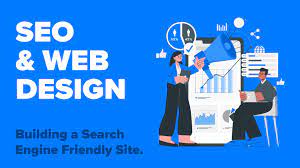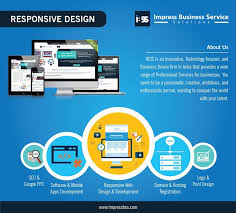SEO Web Design: The Perfect Combination for Online Success
In today’s digital age, having a strong online presence is crucial for businesses of all sizes. A well-designed website is often the first point of contact between a company and its potential customers. However, simply having an aesthetically pleasing website is no longer enough. To truly stand out in the crowded online marketplace, businesses need to incorporate search engine optimization (SEO) into their web design strategy.
So, what exactly is SEO web design? It’s the art of creating websites that are not only visually appealing but also optimized for search engines. It involves implementing various techniques and best practices to improve a website’s visibility in search engine results pages (SERPs). By combining the power of design and SEO, businesses can create websites that not only look great but also rank higher in search engine rankings.
One of the key elements of SEO web design is ensuring that the website is user-friendly and easy to navigate. A clean and intuitive layout allows visitors to find information quickly and effortlessly. When users have a positive experience on your website, they are more likely to stay longer, explore more pages, and eventually convert into customers.
Another important aspect of SEO web design is optimizing the site’s structure and code. This includes using proper heading tags, meta descriptions, image alt text, and URL structures that are relevant to your content. By incorporating these elements strategically, you can help search engines understand the context and relevance of your website’s content.
Additionally, optimizing page load speed is crucial for both user experience and SEO. Slow-loading websites can lead to higher bounce rates as visitors lose patience and leave. Search engines also take into account page speed when determining rankings. By optimizing images, minifying code, leveraging caching techniques, and choosing reliable hosting providers, you can significantly improve your website’s performance.
Mobile responsiveness is another critical factor in SEO web design. With the majority of internet users accessing websites through mobile devices, having a mobile-friendly website is no longer optional. Search engines prioritize mobile-friendly websites in their rankings, so it’s essential to ensure that your site looks and functions well on various screen sizes.
Furthermore, creating high-quality and engaging content is key to attracting both users and search engines. Incorporating relevant keywords naturally into your content can help search engines understand what your website is about and improve its visibility in SERPs. However, it’s important to strike a balance and avoid keyword stuffing, as search engines penalize websites for such practices.
In conclusion, SEO web design combines the best of both worlds: visually appealing design and optimized content for search engines. By implementing SEO techniques into your web design strategy, you can create a website that not only captivates visitors but also ranks higher in search engine results. This combination will ultimately lead to increased organic traffic, improved user experience, and higher conversions for your business. So, if you’re looking to achieve online success, investing in SEO web design is a must.
Frequently Asked Questions about SEO Web Design: Everything You Need to Know
- What is SEO web design?
- How can SEO web design help my business?
- What are the benefits of SEO web design?
- How do I optimize my website for SEO?
- How much does SEO web design cost?
- What tips and tricks should I use to improve my website’s search engine rankings?
What is SEO web design?
SEO web design refers to the practice of creating and optimizing websites with the goal of improving their visibility and ranking in search engine results pages (SERPs). It involves incorporating various SEO techniques and best practices into the design and development process to enhance a website’s chances of being discovered by search engines and attracting organic traffic.
SEO web design goes beyond just creating visually appealing websites. It focuses on optimizing elements such as site structure, code, content, user experience, and mobile responsiveness to make them more search engine-friendly. By implementing SEO strategies right from the start, businesses can improve their website’s chances of ranking higher in search engine results, driving more targeted traffic to their site.
Some key components of SEO web design include:
- User-friendly navigation: Creating a clear and intuitive website structure that allows visitors to easily navigate through pages and find information they are looking for.
- On-page optimization: Optimizing individual web pages by incorporating relevant keywords in title tags, meta descriptions, headings, image alt text, and URL structures.
- Site speed optimization: Ensuring fast page load times by optimizing images, minimizing code, leveraging caching techniques, and choosing reliable hosting providers.
- Mobile responsiveness: Designing websites that adapt seamlessly to different screen sizes and devices to provide a positive user experience for mobile users.
- High-quality content: Creating valuable and engaging content that is relevant to your target audience while incorporating relevant keywords naturally.
- Link structure: Building a strong internal linking structure within your website to help search engines understand the relationships between different pages and prioritize important content.
- Schema markup: Implementing structured data markup on your website to provide additional context about your content to search engines.
By combining effective web design principles with SEO strategies, businesses can create websites that not only look visually appealing but also rank well in search engine results. This ultimately leads to increased organic traffic, improved user experience, higher conversions, and better online visibility for the business.
How can SEO web design help my business?
SEO web design can have numerous benefits for your business. Here are some ways it can help:
- Increased Organic Traffic: By optimizing your website for search engines, you improve its visibility in search engine results pages (SERPs). This means that when users search for relevant keywords related to your business, your website has a higher chance of appearing on the first page of results. Higher visibility leads to increased organic traffic to your site, as more users click on your link.
- Improved User Experience: SEO web design focuses on creating user-friendly websites that are easy to navigate, load quickly, and provide valuable content. When visitors have a positive experience on your site, they are more likely to stay longer, explore more pages, and engage with your brand. This can lead to higher conversion rates and customer satisfaction.
- Higher Search Engine Rankings: Search engines consider various factors when determining rankings, including website structure, code optimization, mobile responsiveness, and content quality. By implementing SEO best practices into your web design strategy, you increase the chances of ranking higher in search engine results. This can give you a competitive edge over businesses that haven’t prioritized SEO.
- Targeted Traffic: SEO web design allows you to target specific keywords and phrases that are relevant to your business and industry. This means that the traffic coming to your site is more likely to be interested in what you have to offer. By attracting targeted traffic, you increase the likelihood of converting visitors into customers or clients.
- Long-Term Results: Unlike paid advertising campaigns that require ongoing investment, SEO web design provides long-term benefits. Once implemented correctly, the optimizations made to your website can continue generating organic traffic and improving search engine rankings over time without additional costs.
- Brand Credibility and Trust: When users find your website at the top of search engine results pages consistently, it builds trust and credibility for your brand. Being associated with high-ranking websites signals to users that your business is reputable and trustworthy. This can positively impact their perception of your brand and increase the likelihood of conversions.
- Cost-Effectiveness: Compared to other digital marketing strategies, SEO web design can be a cost-effective solution. While it may require an initial investment in optimizing your website, the long-term benefits can outweigh the costs. Additionally, organic traffic generated through SEO is free, reducing the need for ongoing advertising expenses.
In summary, implementing SEO web design practices can help your business by increasing organic traffic, improving user experience, boosting search engine rankings, attracting targeted traffic, establishing brand credibility and trust, providing long-term results, and offering a cost-effective marketing solution. It’s a valuable investment that can contribute to the growth and success of your business in the online marketplace.
What are the benefits of SEO web design?
SEO web design offers numerous benefits that can greatly impact the success of your online presence. Here are some key advantages:
- Increased Organic Traffic: By optimizing your website for search engines, you improve its visibility in search results. This leads to higher organic (unpaid) traffic as more users discover and click on your website.
- Improved User Experience: SEO web design focuses on creating user-friendly websites with intuitive navigation, fast loading times, and responsive designs. This enhances the overall user experience, resulting in longer visit durations, lower bounce rates, and increased engagement.
- Higher Search Engine Rankings: Implementing SEO techniques into your web design helps search engines understand and index your website more effectively. This can lead to higher rankings in search engine results pages (SERPs), making it easier for users to find you.
- Targeted Traffic: SEO allows you to optimize your website for specific keywords and phrases related to your business or industry. As a result, the traffic directed to your site is more likely to consist of users actively searching for products or services you offer, increasing the chances of conversion.
- Brand Visibility and Credibility: A well-optimized website that ranks high in search results establishes trust and credibility with users. It positions your brand as an authority in its field and increases brand visibility among potential customers.
- Cost-Effectiveness: Compared to other digital marketing strategies like paid advertising, SEO web design provides long-term benefits without ongoing costs per click or impression. Once implemented correctly, it continues to drive organic traffic without requiring significant financial investments.
- Mobile-Friendly Approach: With the increasing use of mobile devices for internet browsing, having a mobile-friendly website is crucial. SEO web design ensures that your site is responsive across various screen sizes, improving user experience and pleasing search engines that prioritize mobile-friendly sites.
- Competitive Edge: In today’s competitive online landscape, implementing SEO web design gives you an advantage over competitors who may not have optimized their websites. By staying ahead of the curve, you can attract more visitors, generate leads, and convert them into customers.
- Long-Term Results: While SEO may take time to show significant results, its impact is long-lasting. Unlike paid advertising campaigns that cease when the budget runs out, SEO web design continues to drive organic traffic and yield results even after initial optimization efforts.
In summary, SEO web design combines the best practices of web design and search engine optimization to improve your website’s visibility, user experience, and overall online success. It ultimately leads to increased organic traffic, higher search engine rankings, improved brand credibility, and a competitive edge in your industry.
How do I optimize my website for SEO?
Optimizing your website for SEO involves implementing various techniques and best practices to improve its visibility in search engine results pages (SERPs). Here are some key steps you can take to optimize your website for SEO:
- Research Relevant Keywords: Identify the keywords and phrases that your target audience is likely to use when searching for products, services, or information related to your website. Use keyword research tools to find high-volume and low-competition keywords.
- On-Page Optimization: Optimize individual web pages by incorporating relevant keywords into the page title, meta description, headings (H1, H2, etc.), and URL structure. Ensure that your content is well-structured, informative, and easy to read.
- High-Quality Content: Create compelling and unique content that provides value to your users. Focus on creating informative blog posts, articles, product descriptions, or any other type of content that aligns with your target audience’s interests.
- Mobile-Friendly Design: With the majority of internet users accessing websites through mobile devices, it’s crucial to have a responsive design that adjusts seamlessly across different screen sizes. This improves user experience and helps with search engine rankings.
- Page Load Speed: Optimize your website’s performance by minimizing file sizes, leveraging browser caching techniques, and optimizing images. A faster-loading website enhances user experience and can positively impact search engine rankings.
- URL Structure: Create clean and descriptive URLs that incorporate relevant keywords whenever possible. Avoid using long strings of numbers or irrelevant characters in your URLs.
- Internal Linking: Establish a logical internal linking structure within your website by linking related pages together using anchor text containing relevant keywords. This helps search engines understand the relationship between different pages on your site.
- External Linking: Linking out to reputable sources within your content can provide additional value to users and improve the credibility of your website in the eyes of search engines.
- Image Optimization: Optimize images by compressing them without sacrificing quality, using descriptive file names, and adding alt text that describes the image content. This helps search engines understand the visual elements of your website.
- Monitor and Analyze: Regularly monitor your website’s performance using analytics tools to track important metrics such as organic traffic, bounce rate, and conversions. Analyzing this data can help you identify areas for improvement and make informed decisions to optimize your website further.
Remember that SEO is an ongoing process, and it may take time to see significant results. It’s important to stay up-to-date with industry trends, search engine algorithm updates, and user behavior to continuously refine and improve your website’s optimization efforts.
How much does SEO web design cost?
The cost of SEO web design can vary depending on several factors, including the complexity of your website, the scope of the project, and the expertise of the web design agency or professional you choose to work with. It’s important to keep in mind that SEO web design is an investment rather than a one-time expense.
For small businesses or individuals with basic website needs, there are affordable options available. You may find pre-designed website templates or DIY website builders that offer built-in SEO features at relatively low costs. However, these options may have limitations in terms of customization and advanced SEO capabilities.
On the other hand, if you require a custom-designed website with advanced SEO optimization, you can expect to pay more. Professional web design agencies or experienced freelancers who specialize in SEO web design typically charge higher rates due to their expertise and the level of customization involved.
It’s recommended to reach out to multiple web design professionals or agencies and request quotes based on your specific requirements. This will give you a better understanding of the pricing landscape and help you make an informed decision.
Remember that while cost is an important factor to consider, it’s equally essential to evaluate the quality and value that a web design service provides. A well-executed SEO web design can have a significant impact on your online visibility, user experience, and ultimately your business success. So, prioritize finding a reputable professional or agency who can deliver high-quality results within your budget range.
Keep in mind that ongoing SEO efforts may be required even after the initial web design phase. Search engine algorithms constantly evolve, and regular updates and optimization are necessary to maintain and improve your website’s rankings over time. Be prepared for potential additional costs associated with ongoing SEO maintenance and digital marketing strategies.
Ultimately, investing in SEO web design is an investment in your online presence and business growth. The cost will vary based on your specific needs, so it’s best to consult with professionals for accurate pricing estimates tailored to your project.
What tips and tricks should I use to improve my website’s search engine rankings?
Improving your website’s search engine rankings requires a combination of various strategies and techniques. Here are some tips and tricks to help you enhance your website’s visibility and climb up the search engine results pages (SERPs):
- Keyword Research: Conduct thorough keyword research to identify relevant keywords and phrases that your target audience is searching for. Use tools like Google Keyword Planner or SEMrush to find high-volume, low-competition keywords that you can incorporate into your content.
- On-Page Optimization: Optimize your website’s on-page elements such as title tags, meta descriptions, headings, and URL structures. Make sure to include relevant keywords naturally in these elements to help search engines understand the context of your content.
- High-Quality Content: Create unique, informative, and engaging content that adds value to your target audience. Focus on writing for humans first, not just for search engines. Incorporate relevant keywords naturally throughout your content while maintaining readability and coherence.
- Mobile-Friendly Design: Ensure that your website is mobile-friendly and responsive across different devices and screen sizes. With the increasing number of mobile users, search engines prioritize mobile-friendly websites in their rankings.
- Page Load Speed: Optimize your website’s loading speed by compressing images, minifying code, leveraging browser caching, and using a reliable hosting provider. A fast-loading website improves user experience and helps with search engine rankings.
- User Experience (UX): Create a user-friendly website with intuitive navigation, clear calls-to-action (CTAs), and easy-to-find information. A positive user experience encourages visitors to spend more time on your site, reducing bounce rates and improving rankings.
- Link Building: Build high-quality backlinks from reputable websites within your industry or niche. Focus on acquiring natural links through guest blogging, influencer collaborations, or creating shareable content that others will link back to.
- Social Media Integration: Integrate social media sharing buttons on your website to encourage visitors to share your content across various platforms. Social signals can indirectly impact search engine rankings.
- Local SEO: If you have a physical business location, optimize for local search by creating a Google My Business profile, ensuring consistent NAP (Name, Address, Phone Number) information across directories, and getting positive online reviews.
- Regular Updates and Maintenance: Keep your website updated with fresh content, fix broken links, and regularly monitor its performance using analytics tools like Google Analytics or Search Console. Continuously improve and adapt your SEO strategy based on data insights.
Remember that SEO is an ongoing process that requires time, effort, and patience. It’s important to stay up-to-date with the latest industry trends and algorithm changes to ensure your website remains optimized for search engines.




